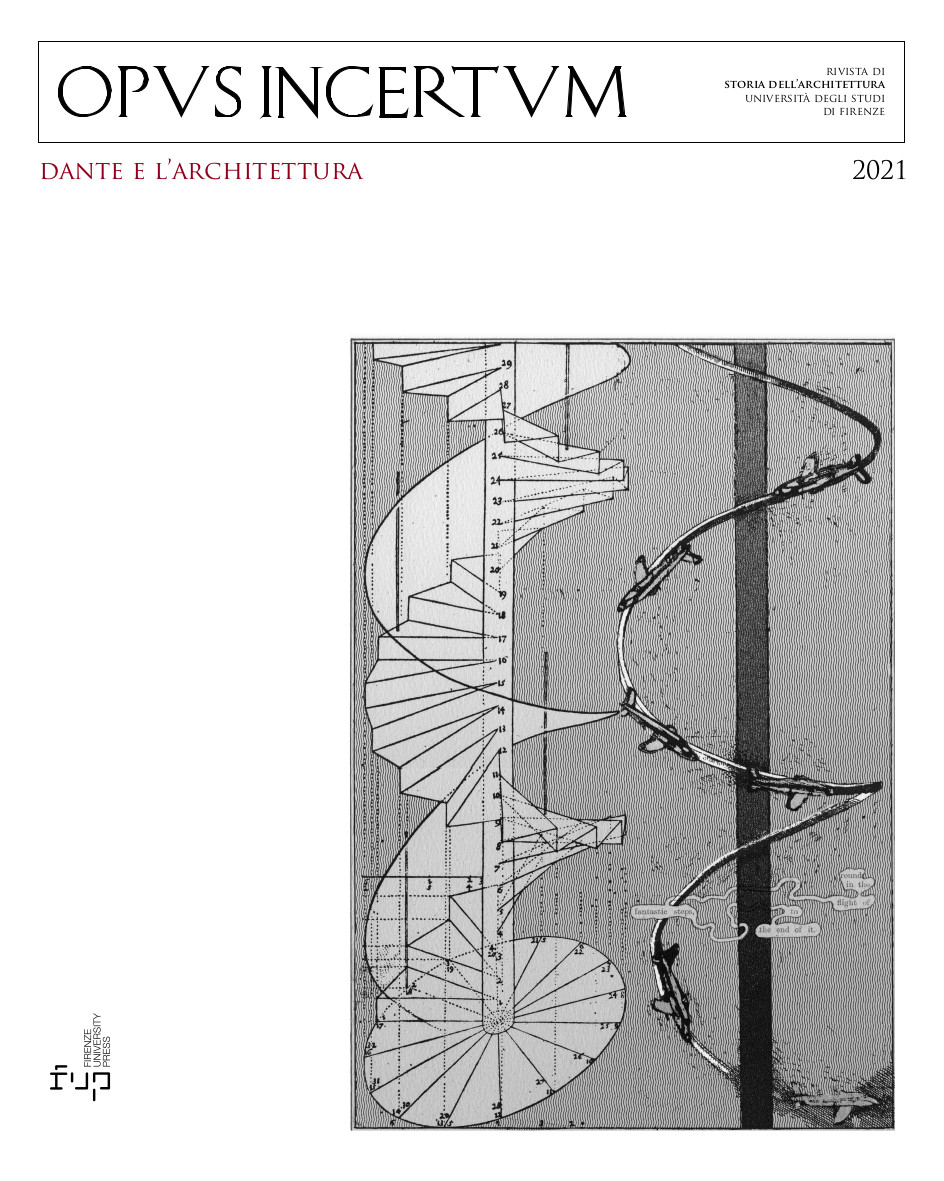Published 2021-12-11
Keywords
- Cartography,
- Hell,
- Navigation,
- Drawing
How to Cite
Abstract
The astronomical metaphors with which Dante in the Divine Comedy periodically provides the coordinates of his journey into the afterlife, suggest that the poet has materially drawn the cosmographic model of the afterworld by measuring the path taken on it, as pilots did during navigation. Renaissance commentators were certainly convinced of this, starting with Antonio di Tuccio Manetti, who around 1460 initiated a period of cosmographic studies on Dante’s hell that continued throughout the 16th century. The Florentine mathematician believed that to fully understand the architecture conceived by Dante in the womb of the Earth, it was necessary to have solid knowledge of geometry, arithmetic, cosmography and drawing. The globe, the nautical chart, the ruler and the compass were, therefore, the tools considered essential in order to give shape, size and location to the immense amphitheater of eternal damnation.


